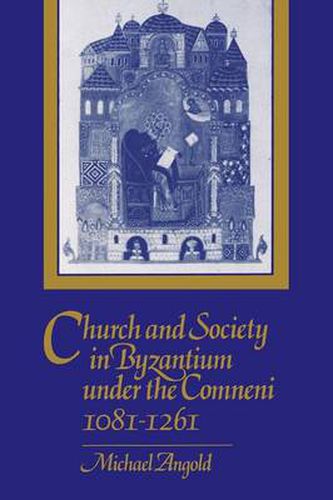Readings Newsletter
Become a Readings Member to make your shopping experience even easier.
Sign in or sign up for free!
You’re not far away from qualifying for FREE standard shipping within Australia
You’ve qualified for FREE standard shipping within Australia
The cart is loading…






In this major study the theme of ‘church and society’ provides a means of examining the condition of the Byzantine Empire at an important period of its history, up to and well beyond the fall of Constantinople in 1204. Of all the Byzantine dynasties, the Comneni came closest to realising the Caesaro-papist ideal. However, Comnenian control over the Orthodox church was both deceptive and damaging: deceptive because the church’s institutional strength increased, and with it its hold over lay society, damaging because the church’s leadership was demoralised by subservience to imperial authority. The church found itself with the strength but not the will to assert itself against an imperial establishment that was in rapid decline by 1180; and neither side was in a position to provide Byzantine society with a sense of purpose. This lack of direction lay at the heart of the malaise that afflicted Byzantium at the time of the fourth crusade. The impasse was resolved after 1204, when in exile the Orthodox church took the lead in reconstructing Byzantine society.
$9.00 standard shipping within Australia
FREE standard shipping within Australia for orders over $100.00
Express & International shipping calculated at checkout
In this major study the theme of ‘church and society’ provides a means of examining the condition of the Byzantine Empire at an important period of its history, up to and well beyond the fall of Constantinople in 1204. Of all the Byzantine dynasties, the Comneni came closest to realising the Caesaro-papist ideal. However, Comnenian control over the Orthodox church was both deceptive and damaging: deceptive because the church’s institutional strength increased, and with it its hold over lay society, damaging because the church’s leadership was demoralised by subservience to imperial authority. The church found itself with the strength but not the will to assert itself against an imperial establishment that was in rapid decline by 1180; and neither side was in a position to provide Byzantine society with a sense of purpose. This lack of direction lay at the heart of the malaise that afflicted Byzantium at the time of the fourth crusade. The impasse was resolved after 1204, when in exile the Orthodox church took the lead in reconstructing Byzantine society.